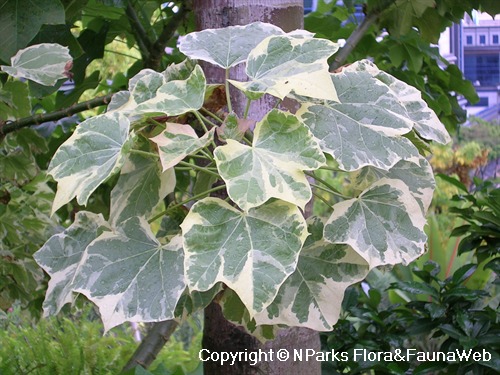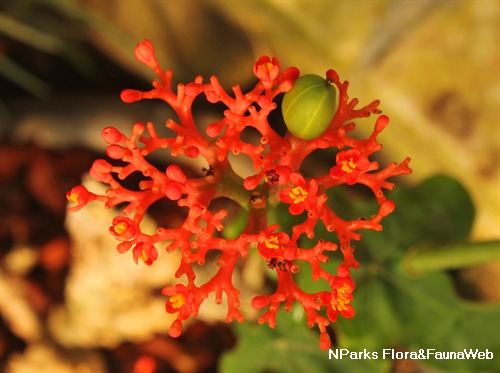
Name
Classifications and Characteristics
| Plant Division | Angiosperms (Flowering Seed Plants) (Dicotyledon) |
|---|---|
| Plant Growth Form | Tree (Shrubby (1m-5m)), Shrub |
| Lifespan (in Singapore) | Perennial |
| Mode of Nutrition | Autotrophic |
Biogeography
| Native Distribution | Tropical America |
|---|---|
| Native Habitat | Terrestrial |
| Preferred Climate Zone | Tropical, Sub-Tropical / Monsoonal |
| Local Conservation Status | Non-native (Spontaneous (Casual)) |
Description and Ethnobotany
| Growth Form | Large shrub or small tree with spreading branches. |
|---|---|
| Foliage | Lobed leaves (6-40 cm long, 6-35 cm wide) have 3 or 5 pointed tips which are acute or acuminate (pointed or sharply pointed, respectively). The petiole is 2.5-7.5 cm long. Leaf arrangement is alternate with 1 leaf occurring per node or place on the stem. |
| Flowers | This species is monoecious having male and female flowers on the same plant. Flowers are yellow-green and bell-shaped. Female flowers occur singly, while male flowers are arranged in an inflorescence known as a cyme. |
| Fruit | Round, yellow fruits (2.5-4 cm wide) are known as capsules which split into 3 compartments or valves. Each fruit produces 2-4 black, oblong seeds. The seeds contain up to 35% oil which is not edible, but has potential as a biodiesel. Consumption of the seeds will induce diarrhoea. |
| Cultivation | This species can grow on poor nutrient soils and withstand prolonged drought. |
| Ethnobotanical Uses | Others: By-products from processing the oil in seeds can be used to make a variety of products, such as paper, soap and toothpaste. The seed cake (the leftover product after seeds are pressed for oil) can be used as an organic fertilizer. |
Landscaping Features
| Landscape Uses | General, Slope Stabilization |
|---|---|
| Usage Hazard - Cons | Toxic Upon Ingestion |
Plant Care and Propagation
| Light Preference | Full Sun |
|---|---|
| Water Preference | Moderate Water |
| Plant Growth Rate | Fast to Moderate |
| Rootzone Tolerance | Drought Tolerant, Moist Soils, Well-Drained Soils, Poor Infertile Soils |
| Maintenance Requirements | Low |
| Propagation Method | Seed, Stem Cutting |
Foliar
| Foliage Retention | Evergreen |
|---|---|
| Mature Foliage Colour(s) | Green |
| Mature Foliage Texture(s) | Smooth |
Floral (Angiosperm)
| Flower & Plant Sexuality | Unisexual Flowers |
| Flower Colour(s) Remarks | Yellow-green |
|---|
Fruit, Seed and Spore
| Mature Fruit Colour(s) | Yellow / Golden |
|---|---|
| Mature Fruit Texture(s) | Smooth |
| Mature Seed Colour(s) | Black |
| Seed Quantity Per Fruit | Few (1-5) |
Image Repository
Others
| Master ID | 31238 |
|---|---|
| Species ID | 5633 |
| Flora Disclaimer | The information in this website has been compiled from reliable sources, such as reference works on medicinal plants. It is not a substitute for medical advice or treatment and NParks does not purport to provide any medical advice. Readers should always consult his/her physician before using or consuming a plant for medicinal purposes. |


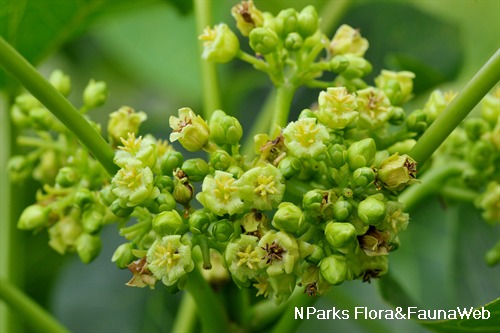
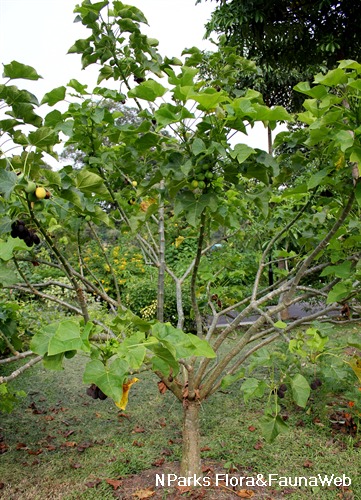
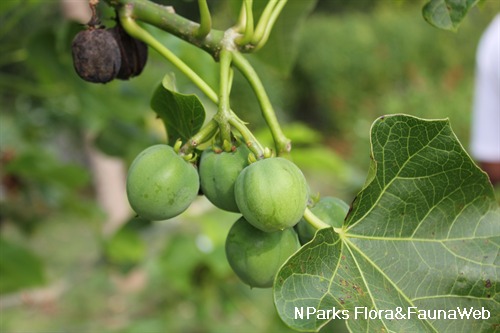
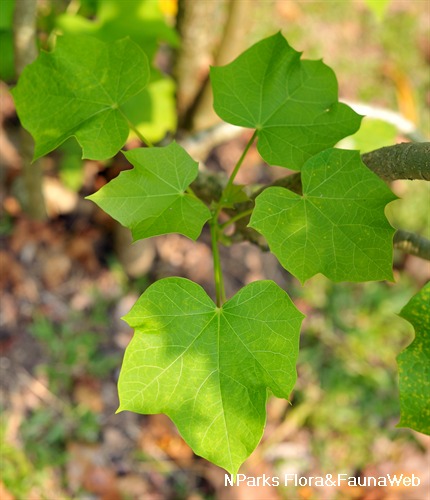

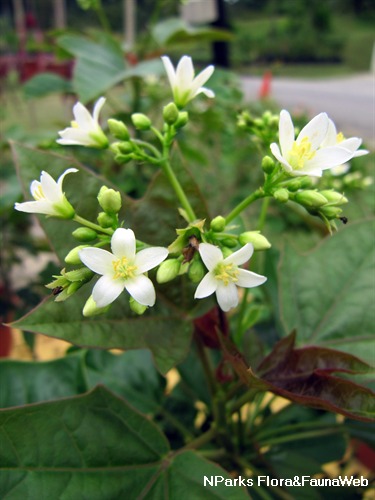
.jpg)
